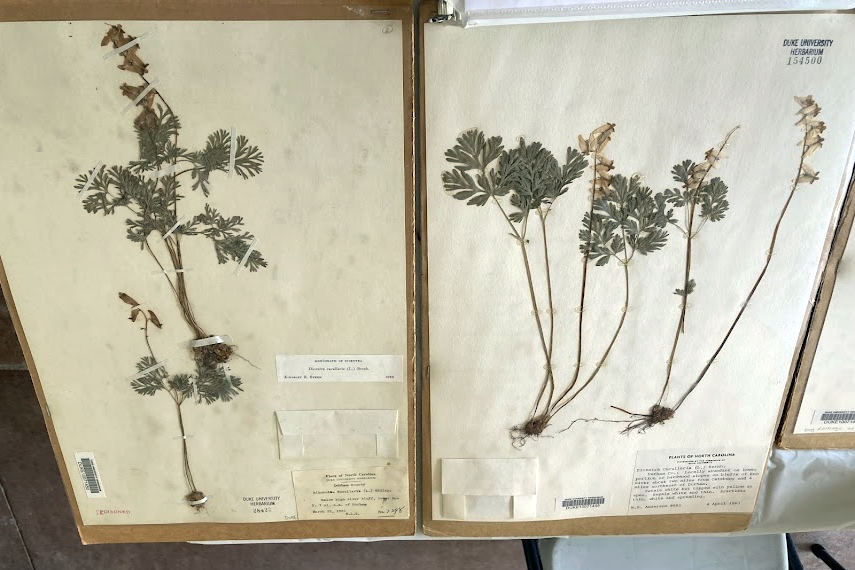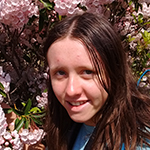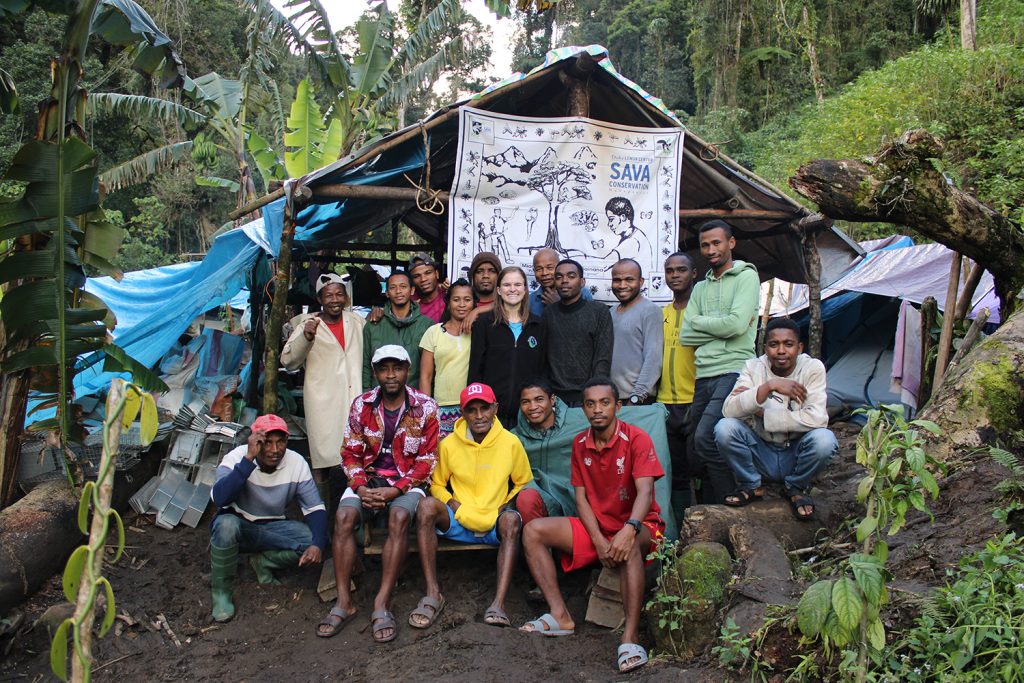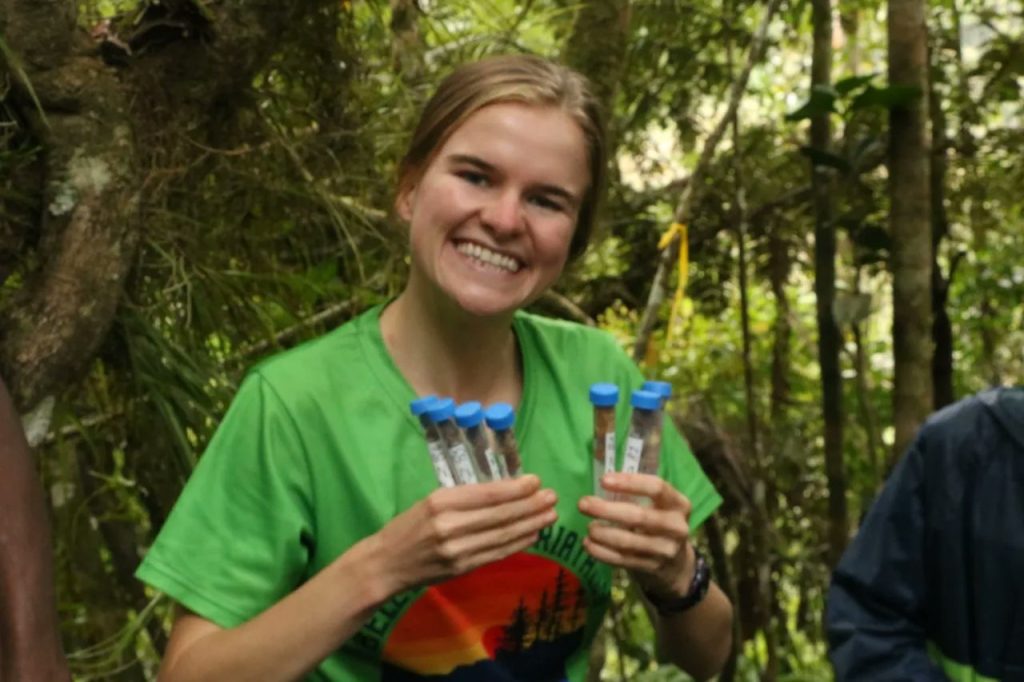Bennett Place, a North Carolina State Historic Site in Durham, is known for its role in a Civil War surrender, but a recent event focusing on the site’s natural history sought to broaden that story. Kalei Porter, a Graduate Liberal Studies student at Duke, led the event, which focused on changing land use at Bennett Place over time.
Jim Barrett, a volunteer tour guide, led a tour of Bennett Place focused on the more well known parts of its history. “The Civil War was a series of five military surrenders,” he explains. The first occurred in Appomattox Court House in Virginia, but while that marked a symbolic end to the war, technically only the Confederate Army of Northern Virginia surrendered there. Another surrender meeting occurred on the land now known as Bennett Place, where Union General Sherman and Confederate General Johnston met at the Bennett family’s small farm to discuss their terms of surrender.
That meeting ultimately led to the preservation of the farm as a historic site, but the history of Bennett Place “should not be an exclusive Civil War story,” Porter says. She has a degree in environmental biology, and her work at Bennett Place combines her interests in ecology and history.
For the past two academic years, Porter has been involved with the North Carolina Lives and Legacies Project, which uses research to tell more nuanced, inclusive stories about land use at sites like Bennett Place. The project, which is based in Duke’s Information Science + Studies, has also received support from Bass Connections in the Vice Provost’s Office for Interdisciplinary Studies and Duke University Libraries. This summer, Kalei will continue her research as a Graduate Project Manager in a History+ team.
James Bennett and his family were small-scale, yeoman farmers. They had about 200 acres, Porter says, “sustaining four to ten people.” They grew most of their own food and sold handmade clothing and crops like watermelons and vegetables at a local market, Barrett says. The site was preserved by civil leaders, including one of Washington Duke’s sons, according to Barrett. The original house was destroyed in a fire in 1921 but was rebuilt in 1962 with material from a similar house, Porter explains. On Barrett’s tour, he mentioned that Sherman brought an illustrator to the surrender meeting, and the pictures from that day still exist, so we know what the house originally looked like. The new house was rebuilt to resemble the old one.
Porter’s event included a display of plants from Duke’s herbarium. The dried plants she chose were collected in North Carolina in different decades, preserving important information about flowering time and native flora in specific sites. “You have a little slice of spring from as far back as the 30’s,” Porter says about the plants she chose.

The exhibit at the event includes other items, too, like a list of who has used this land at different points in history. Before 1782, according to a sign at the event, several Native American tribes inhabited the area, including the Seponi, Cheraw, Catawba, Lumbee, Occaneechi, and Shakori. In 1782, Jacob Baldwin purchased the land, and it changed hands at least twice again before James Bennett bought it in 1846.
There is also a detailed soil map from 1920 on display. Such surveys can make farming more profitable since different crops do best in different soil conditions. Porter says the first geological survey in North Carolina was conducted in the 1850s, making North Carolina only the third state—and the first state in the South—to do soil surveys.
Porter has been working on transcribing Bennett’s ledger papers, which she describes as “a cross between a diary, a planner, and a credit card log.” They provide a record of daily life for a small farmer in North Carolina. Porter says Bennett made a lot of notes about fixing his tools.
Later in the day, Porter led a tour of the site with a focus on natural history. We start on a path lined with fences. Historically, it was a road that went from Raleigh to Hillsborough, and it also “roughly lines up with some of the Native American trading routes that predated the property,” Porter says.
We stop at the Unity monument, built in the 1920s soon after the Bennett house burned down. Robert Buerglener, Research Associate, Duke Information Science + Studies, explained to me earlier that the Unity monument may have survived because its meaning is more ambiguous than many Confederate monuments. Porter says the monument incorporated stone from the North, West, and South to represent the theme of unity.
We tour the house and separate kitchen. Both give glimpses into the lives of the Bennett Family. A ladle made from a dried gourd. Jars of persimmon seeds and other items that, according to Barrett, were used as wartime replacements for more typical ingredients. Wood siding on the house that Porter says dates from the 1850s.
It’s not just the buildings that reveal the story of this land. Porter points out trees, shrubs, and fences as well.
Before the Civil War, she says, livestock here roamed free. Buildings and gardens would have been fenced to keep the livestock out. After the war, however, fencing became more expensive, and people started creating fences around the livestock instead and building cheaper, less sturdy fences.
As we walk toward a nature trail at the back of the property, Porter draws our attention to the pine trees. Both loblolly and shortleaf pines grow here. Historically, shortleaf would have been more common in this area, but places that have been recently managed for timber tend to have loblolly. Most of these pines are still relatively young; they were not here when the Bennetts lived on this land.
In the forest, many of the low-growing plants we pass are species of blueberry. Porter has searched through digitized North Carolina newspapers for records of the word “blueberry.” It was first mentioned in the 1880s as a verb, blueberrying (women going out to pick wild blueberries) but wasn’t grown commercially in this area until the 1930s.
Porter ends her tour by asking us to look at the sky. Even the sky could have changed in the centuries since the Bennetts farmed this land. Today it’s clear and blue, but modern pollution could make it less blue than it used to be, Porter says, and some days we might see airplane contrails, which the Bennetts would never have seen back then. “Sometimes the sky is even asynchronous with time,” Porter says.

Post by Sophie Cox, Class of 2025
















